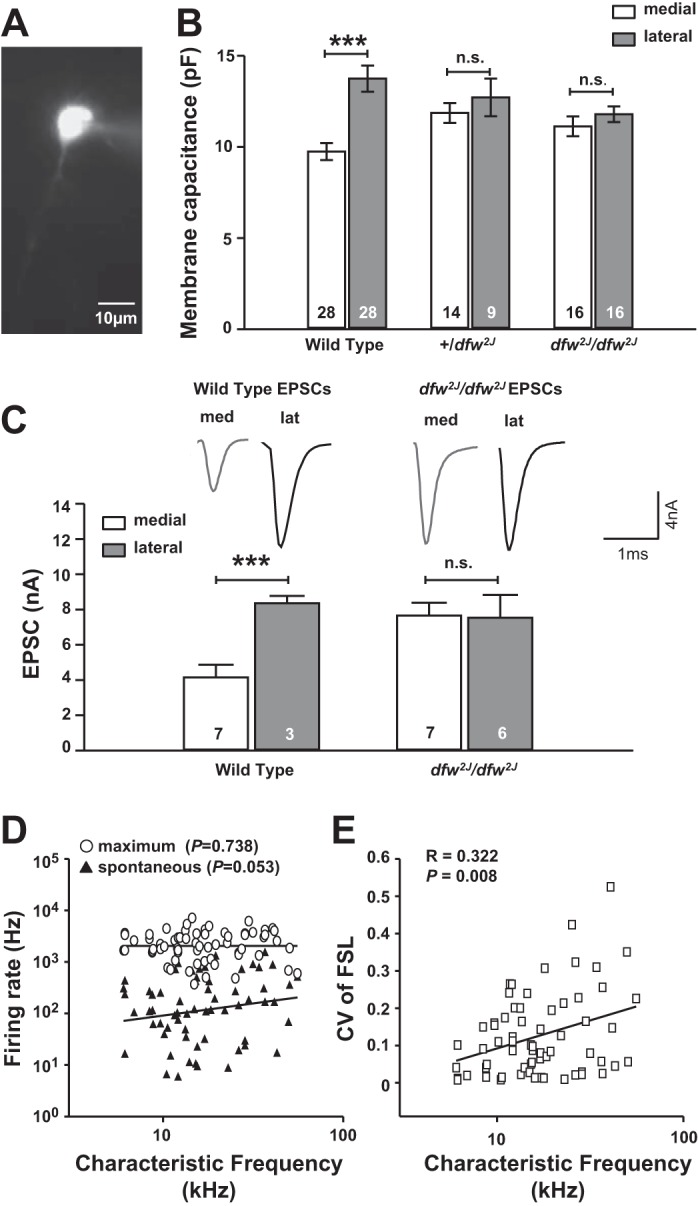Fig. 4.

Lateral MNTB neurons have a larger membrane capacitance and larger calyceal inputs in wild type but not in dfw2J mutants. A: cell membrane capacitance was acquired for visually identified neurons in voltage-clamp mode. Dye labeling of each neuron via the patch pipette allowed off-line measurements of the neurons' position within the MNTB. B: capacitance measurements corroborate histology data showing that lateral cells are significantly larger than medial cells in wild type (P ≤ 0.001) but there is no significant difference between cells in +/dfw2J and dfw2J/dfw2J mutants (n.s.). Error bars show SE. C: calyceal EPSCs are larger in lateral than in medial MNTB wild-type neurons. No significant difference was found between EPSC amplitudes of medial and lateral neurons in dfw2J/dfw2J mutants. D: in in vivo recordings of single MNTB neurons in wild types, characteristic frequency is used as a measure for medial-to-lateral position. No significant correlation was found between medial-to-lateral position and firing rate. E: the coefficient of variation for the first spike latency (FSL) showed a positive correlation with characteristic frequency. Unfortunately, because of the deafness phenotype these data could not be acquired in the dfw2J/dfw2J mutants. ***P ≤ 0.001, n.s., not significant.
